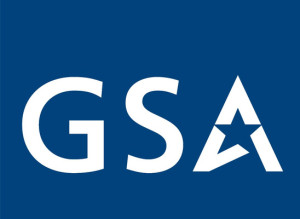
To think like a startup company within government, flip the script
The federal government is lagging behind the private sector when it comes to innovation, but that doesn't mean employees can't kickstart their offices to embrace...
One of the national security risks facing the country is right inside the government.
Federal offices to be exact, which not only physically separate employees with cubicle walls, but stop collaboration on new and exciting ideas that have already been adopted in the private sector.
“I actually think that this is a national security risk for this country,” said Sarah Heck, chief of staff for the State Department’s Bureau of Educational and Cultural Affairs, during an Aug. 2 NextGen training summit in Washington. “I am frightened by the speed at which everything outside Washington is hurling themselves forward and we allow people to willingly say, ‘We should put the brakes on this.’ This is a problem, and if we are not ourselves as government employees informed about what’s going on outside, we can’t make the arguments to prove that this is a national security problem.”
Which means it’s time for agencies to start thinking like a startup — and the way to do that is start small.
Sidney Olinyk, former chief of staff for Middle East Policy in the Office of the Secretary of Defense, said once you’ve accomplished a few small things in your office, people are more willing to consider bigger ideas.
Something like moving to the cloud may seem incredibly frightening at first, but if you can prove you’ve saved someone 5 minutes of their day, or created something your team can use, you build a reputation for success, Olinyk said.
“It’s always the stuff that no one wants to do,” said Olinyk, who is now the co-founder and CEO of Dūcō. “There’s a lot of room to tackle things there, and I think that you’ll gain champions that way, you’ll be a lot more credible.”
Building that team of champions can also be a challenge because of a particular environment or rules in an office.
“It seems really stupid, but many of us don’t pick up the phone any more,” Heck said. “Not only are we not going to lunch with people, we’re not picking up the phone anymore. While we may not be able to tear down cubicle walls that we have, we do have the ability to create environments that are more collaborative. I think that’s where innovation starts, even in very regulated places, because I don’t think innovation is always that project that’s very public, that’s innovative, it’s also how you think as an office or as an agency or department.”
The ‘no’ reflex
Heck and Olinyk also stressed the importance of including the right people in that group of supporters who will help foster a startup culture in an office.
Often the more public-facing employees or policy experts are the ones pushing for innovation, Heck said, when really it’s about getting rank and file employees excited and interested in the change.
“Those are the people that are really on the ground with the technical knowledge, the ability to actually make the change,” Heck said. “If we’re not letting them see the innovative light of day, none of us are going to be able” to suggest pie in the sky ideas.
But even after you’ve got colleagues in your corner, there is the challenge of convincing managers and other agency leaders to join the team.
What can help, said Joshua Marcuse, senior adviser for policy innovation at the Office of the Secretary of Defense, is using evidence to make your case.
“When you can start to point to these examples, it really helps I think turn the tables on people who’ve learned a reflex of saying no and think that they’re being more considerate but the data is not actually on their side,” Marcuse said.
Measure out the cost of inaction instead of cost of action, he added, because sometimes “there’s a really high cost to not innovating.”
If you know your manager wants to do the safest thing, create doubt in their mind about which is the safer option.
“All of a sudden experimentation and innovation starts to look a lot less scary,” Marcuse said. “What we will say is what if we just for eight weeks tried out this new thing and if you hate it we’ll stop doing it. But aren’t you willing to at least try to see if we can save time or money during this eight-week experiment. That brings the threshold to getting to ‘yes’ way down, and if you say by the way this agency’s doing it and that agency’s doing it and this part of your organization’s already doing it, don’t you not want to be left behind, wouldn’t you be wiling to try this out to see if it works, it starts to make it look a little bit more attractive.”
Copyright © 2024 Federal News Network. All rights reserved. This website is not intended for users located within the European Economic Area.
Related Stories





